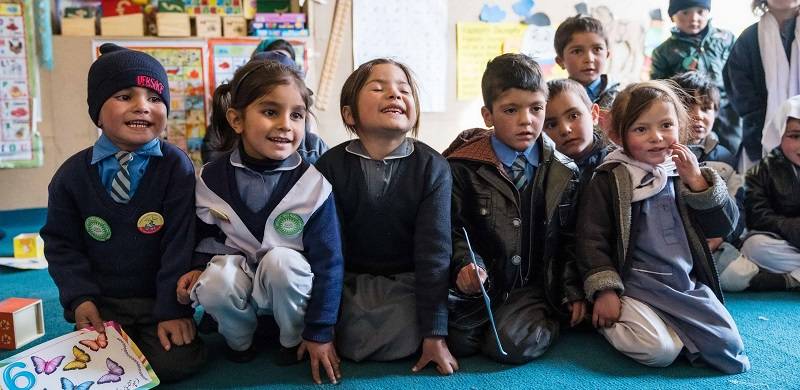
The Prime Minister has once again professed his commitment to providing Pakistan with a uniform educational system. Federal Minister for Federal Education and Professional Training Shafqat Mahmood has also stated that the proces of preparing a single curriculum for primary school students had been completed and textbooks were now being developed. These will be rolled out, we are told, at the start of the 2021 academic year – and in subsequent years, the process will be extended until the end of high-school education.
To the extent that the Prime Minister seems interested in dealing with the immense class-based inequalities reflected in Pakistan's educational systems, the goal itself is a laudable one.
There is a Western-pattern educational system for Pakistan's upper-middle-class and elites, a public education curriculum and then a madrassah system. These three have very different learning goals and teaching methods – resulting in very different life outcomes. Generations of Pakistanis have grown up in the shadow of this brutal class-based divide which makes itself apparent from the earliest age.
As is often the case with the PTI government, however, there is a need for some cautionary notes.
First, the fact that the Prime Minister, his team and their favoured ideologues may be missing out on the roots of the class divide in Pakistan's educational system. All the emphasis appears to be on eliminating the differences in curriculum and language of teaching. But the class divide in Pakistani education arises first and foremost because of the low priority assigned to education spending by the state. When successive federal and provincial budgets treat education spending as a last priority, it leaves gaping holes in educational access. With the public education system so woefully neglected, the people are forced to rely on their own devices. The rich opt for schools that teach a Western (often British-style) curriculum. The poor are left to the mercy of the madrassah system.
If there is a class divide in Pakistan's educational system, the different curricula are simply a symptom of it. The root cause is the refusal of Pakistan's elites – elected and unelected alike – to prioritize education spending.
Second, given that the government repeatedly insists that there is a problem due to three educational systems running in parallel and has committed to “fixing” it, there are valid concerns on whether the solution might create a new problem. It is not yet clear if the government has considered the weaknesses of the curricula which it is seeking to replace. Have the authorities considered ways to encourage critical thinking, creativity, ethnic pluralism and religious tolerance through the new curriculum – or will it remain hostage to obscurantist clerics and narrow nationalist ideologues? Recent indications on this count are not encouraging: from trying to whitewash state failures such as 1971 from high-school curricula to constant attempts by religious elements to dictate what is taught as science, faith and identity to pupils.
In any case, there is a general level of worry which accompanies any major new initiatives by the PTI government, due to its unfortunate reputation for bungling up: all the way from conception down to the details of implementation.
To the extent that the Prime Minister seems interested in dealing with the immense class-based inequalities reflected in Pakistan's educational systems, the goal itself is a laudable one.
There is a Western-pattern educational system for Pakistan's upper-middle-class and elites, a public education curriculum and then a madrassah system. These three have very different learning goals and teaching methods – resulting in very different life outcomes. Generations of Pakistanis have grown up in the shadow of this brutal class-based divide which makes itself apparent from the earliest age.
As is often the case with the PTI government, however, there is a need for some cautionary notes.
First, the fact that the Prime Minister, his team and their favoured ideologues may be missing out on the roots of the class divide in Pakistan's educational system. All the emphasis appears to be on eliminating the differences in curriculum and language of teaching. But the class divide in Pakistani education arises first and foremost because of the low priority assigned to education spending by the state. When successive federal and provincial budgets treat education spending as a last priority, it leaves gaping holes in educational access. With the public education system so woefully neglected, the people are forced to rely on their own devices. The rich opt for schools that teach a Western (often British-style) curriculum. The poor are left to the mercy of the madrassah system.
If there is a class divide in Pakistan's educational system, the different curricula are simply a symptom of it. The root cause is the refusal of Pakistan's elites – elected and unelected alike – to prioritize education spending.
Second, given that the government repeatedly insists that there is a problem due to three educational systems running in parallel and has committed to “fixing” it, there are valid concerns on whether the solution might create a new problem. It is not yet clear if the government has considered the weaknesses of the curricula which it is seeking to replace. Have the authorities considered ways to encourage critical thinking, creativity, ethnic pluralism and religious tolerance through the new curriculum – or will it remain hostage to obscurantist clerics and narrow nationalist ideologues? Recent indications on this count are not encouraging: from trying to whitewash state failures such as 1971 from high-school curricula to constant attempts by religious elements to dictate what is taught as science, faith and identity to pupils.
In any case, there is a general level of worry which accompanies any major new initiatives by the PTI government, due to its unfortunate reputation for bungling up: all the way from conception down to the details of implementation.
